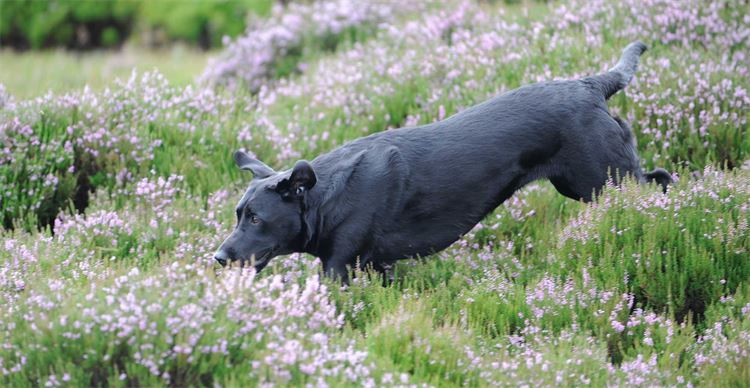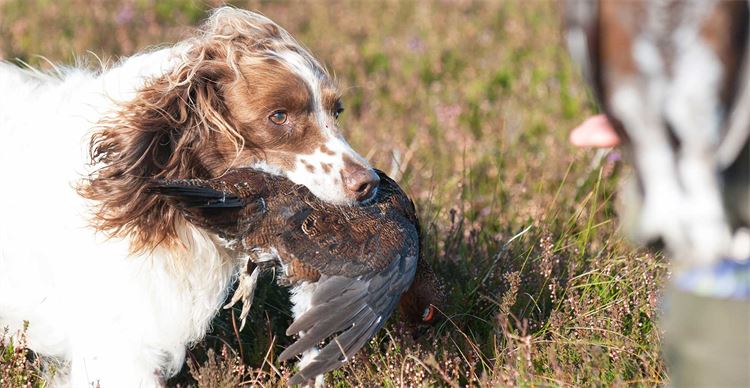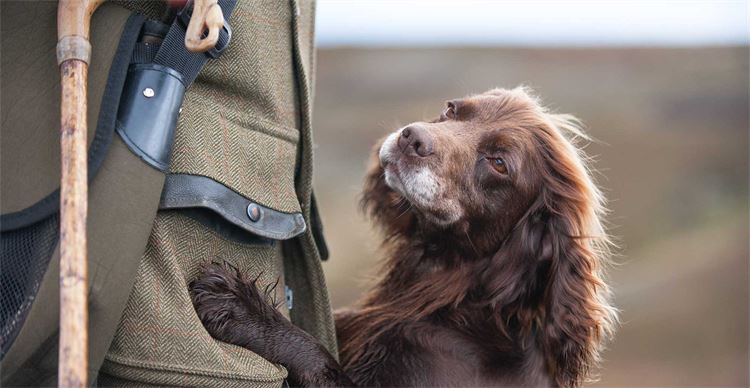Expert advice for those who will be working a dog on the moors for the first time this season.
I’m not sure whether it’s because I live down in Gloucestershire, but I think there is something rather special about being up on a grouse moor with my dogs.
Maybe it’s the solitude and the timeless scenery, which is an ever-changing picture according to the weather. Or perhaps it is because it’s so very different to what I am used to – picking-up on pheasant shoots in the Cotswolds where most of the day my dogs are sweeping-up in woodland and often working out of my sight.
Indeed, if you’re taking a dog onto the moors for the first time this season – whether as a companion in the butts or as part of the picking-up team – there are a few things worth bearing in mind.

Positioning
Of course, pheasants and partridges are shot above the skyline, but grouse are normally shot very low. And so it’s important to be far enough back to be safe from dropping shot – somewhere you can sit down and keep your eyes peeled as the birds filter through the butts.
Grouse are very tough birds and odd wounded ones can carry on for several hundred yards before they pitch in or drop dead from the sky, especially if they have a strong wind behind them. The terrain and windspeed will determine how far behind the Guns you will be, but your positioning will also be dependent on whether the next drive is a return one.
Scenting conditions
On the first day or so, dogs not used to working in heather, and excited to be back out picking-up again, often race about over the moor, going over birds, and it’s not uncommon to pick-up grouse by hand behind them. As a result it is easy to come off the moor feeling frustrated and disappointed with your usually good game-finders.
The dogs must learn to settle down and get their heads down in the heather. Scent can be poor if the weather is dry and hot, and if there has been no rain for a while. The beautiful purple heather might be looking at its best but it is full of thick pollen too, which also makes scenting conditions extremely difficult for the dogs. So it is worth considering the wind direction and taking your time.

Fitness
Don’t underestimate the level of fitness required – for both dogs and humans. On some moors it can be challenging enough for the Guns to get to their butts, let alone the pickers-up! You have to keep your eyes on where you are walking, too. Any light green, wet grassy areas must be avoided at all costs – otherwise you might find yourself up to your backside in wet bog!
Ideally, throughout the summer months leading up to August, you will have been working on getting your dog fitter, and training using dummies to polish up stopping on the whistle and taking hand signals. Busy people might even prefer to send their dog back to school for a couple of months to a reputable dog trainer.
The weather
Be prepared for all weathers. You can experience four seasons in one day on a grouse moor, so it’s a good idea to take a selection of different types of clothing so you are not caught out. On the subject of clothes, no bright colours should be worn. Instead, wear colours which blend into the landscape.

The format
When the beaters are about 300 yards from the butts, horns are blown. It is common practice, and for the benefit of the rest of the line, the flankers and the beaters, for all the Guns to acknowledge they have heard this by holding their guns up high in the air. No more grouse will be shot at in front of the butts after this first horn. Horns will be blown again once the drive is over, and the pickers-up then get to work. Areas in which birds have dropped are hunted first, before working towards the butts. Whilst this is being done, Guns with dogs will be busy picking grouse around their butts. Then the picking-up team will, starting at one end, sweep-up along the whole line.
Roll on the Glorious Twelfth!